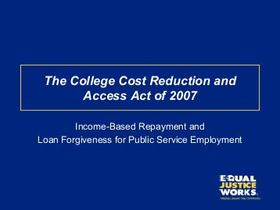The California Community College system is the largest of its kind in the world, and as such, it tends to come under intense scrutiny any time changes are suggested or made. Governor Jerry Brown has recently been thrust into the community college focus, as the governor has dealt with a budget crisis facing the system. Now that California voters have agreed to pour more money into the state’s community colleges, Brown is making headlines once again, with his ideas for reforming the entire system.
More Money brings Reform Plan
Thanks to the passage of Proposition 30 last November, community colleges will be receiving more funding – nearly $200 million more, according to a Los Angeles Times report. The money is much needed for a system that has been forced to significantly cut class offerings and even students in an effort to balance dwindling budgets. With the money comes Governor Brown’s plan for college reform, designed to improve completion rates and accessibility throughout the system. While the plan is hailed by some as a bold approach to improving higher education in the state, others fear some of the elements of the plan could have a negative impact on the very students the plan was created to help.
The Los Angeles Times states that reforms issued by Governor Brown could significantly alter the way community colleges in the state operate in the future. As the governor drafted his community college reform plan, he kept certain priorities in mind. First, community college must continue to be an affordable mode of higher education for California residents. Second, students must be able to get the classes they need, a shift from the current system where wait lists for in-demand classes are common. Third, students need to be able to move through the community college system as quickly and efficiently as possible, ensuring higher completion rates for community colleges overall.
This video explains how California community colleges are driving the work force.
Details of the Plan
The Pasadena City College Courier reported last fall on the details of the governor’s plan, which was created by a 20-member Student Success Task Force. The task force made eight recommendations, based on their current assessment of the community college system and identified areas for improvement. The new plan was signed into law by Governor Brown last September, but the effects of the plan will not begin to be felt until 2014. In the meantime, those who will be affected by the new reforms are providing their input on whether the plan is indeed the best approach to improving the performance and effectiveness of community colleges in the state.
Parts of the plan revolve around improving completion rates by focusing on academic performance by students. Fee waivers will now be granted based on a student’s academic record, rather than simply financial need. To qualify for fee waivers in the future, students will have to demonstrate minimal education requirements, which include a 2.0-grade point average and progress toward a degree or transfer program. Students that have been on probation for two consecutive semesters or more will no longer qualify for fee waivers.
Students could also lose their ability to retake courses in an effort to bring up their grade point average. Currently, students may take a course more than once if their initial grade is not as high as they want or need. Some students say this new policy could hurt their chances of completing transfer programs to four-year schools that require certain GPAs to allow the transfer.
Registration priority is another focus of Governor Brown’s reform plan. Currently, new community college students are placed at the bottom of the registration list, which makes it difficult for these students to get the courses they need. Under the new plan, incoming students will receive registration priority, while students with 100 or more hours will move down the registration list. The purpose of this new rule is to discourage students from remaining in the community college system without a clear direction toward completion.
This video lists the best California colleges for international students.
Controversial Components
The new plan also features some components that are proving controversial among college administrators, educators and students. Brown’s plan has included a cap on state-subsidized classes, which means after a student earns 90 hours, they will be paying full price on their tuition fees. That brings a credit hour from just $46 to $190; a considerable price jump, according to ABC Local. Students voiced concern to the news station that the new rule will discourage students who are currently pursuing a double major, or those who are exploring different areas of interest before settling on a specific degree program.
Another controversial feature of the plan is the change to the funding formula for community colleges. Currently, schools get funding based on the number of students enrolled at the college during the third or fourth week of classes. With the new plan, colleges will only get reimbursed for students who successfully complete courses. Opponents of this feature are worried it will result in “dumbing down” classwork to ensure more students pass the classes. It could also move schools to eliminate challenging courses completely.
Although the changes will not be implemented for some time, students, faculty and staff are not wasting any time in making their opposition to certain aspects of the plan heard. Governor Brown has heard numerous concerns voiced by those who could be negatively impacted by his reform. As the time for implementation draws closer, community college officials and state lawmakers may be in for significant protests over some of the aspects of their new and improved community college success plan.
Questions? Contact us on Facebook. @communitycollegereview















